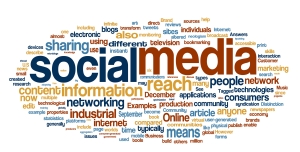Rick Teitloff, Intern, Shank Public Relations Counselors

Welcome to the inaugural post of our new, regular blog series, The Principals’ Office! Like much of my youth, when I needed to be taught a lesson (which was more often than I cared for) I got sent to the principal’s office. I guess a whole lot hasn’t changed in the past 20 years. In this series I sit down with David and Marilyn Shank – the principals of Shank Public Relations Counselors, Inc. – and ask them questions about public relations.
For our first edition we decided to discuss crisis communications! This is an area where public relations professionals can prove to be invaluable to a company. It is also an area that Shank Public Relations Counselors has extensive experience and knowledge.
Rick (R): How important is crisis communications and management and why?
David (D): “Crisis communication and management is critical. A crisis happening is not a matter of if, but when! And when that crisis comes, you better be prepared. I can’t emphasize enough how important crisis management and communication is.”
Marilyn (M): “I agree completely. The way a company manages or mismanages a crisis can end up costing millions of dollars or the entire company itself!”
R: Should all companies have a crisis plan template?
D: “Each company should have a crisis plan, but not a template. Each crisis is different and there is no cookie-cutter template that is a fix-all.”
M: “Companies shouldn’t have a template, but a plan to help guide them through the process. Companies should also always have a back up; a plan a, b and c.”
R: Should companies try to go it alone or bring in professionals?
M: “If a company has a capable staff of their own and a plan, then they could possibly handle it on their own. But if they don’t have staff with experience in crisis management then they certainly need to bring in professional help.”
D: “And even if a company does have internal staff, bringing in a consultant will bring a different, sometimes more objective, perspective. This can be especially helpful in emotionally charged crises, such as incidents involving human casualties or injuries.”
R: What’s the most important thing to do in crisis communications?
D: “Get the facts right as you have them while being immediate as possible. Don’t speculate, don’t BS, stick to the facts.”
M: “You have to be available and you have to state the facts.”
R: What’s the most important thing to avoid?
M: “You can’t hide. You have to make yourself available and manage the crisis. Also, never, under any circumstances, put things ahead of people. If there are casualties in the crisis, the people don’t want to know that you will be back to work tomorrow. Empathize with those who have lost loved ones and leave it at that.”
D: “Never speculate! If you have an explosion in your factory and you know people are injured, don’t say ‘we have around 45 injured workers.’ Stick to what you know, ‘we have workers who were injured in the explosion. We’re not certain how many, but we will let you know when we have that information.’”
R: Is “no comment” ever acceptable?
D&M (simultaneously): “No!”
D: “Absolutely not. Not only is it bad practice, but studies have shown that saying ‘no comment’ causes people to assume guilt. You can use different terminology to get your point across and be credible.”
R: How important is internal communication in a crisis plan?
D: “Internal communication is extremely important in a crisis. Unfortunately, it is often left out of crisis plans by companies. Good plans include how information will be disseminated from the top down or the bottom to the top. Everyone from the CEO to the stockholders, investors and employees.”
M: “Having internal communications in the crisis plan ensures that everybody knows what the protocol is as far as the lines of communication are concerned.”
R: What is the timeline for responding to a crisis now?
D: “The timeline has drastically changed. It used to be the 24 hour ‘golden window’ to respond to a crisis. Now it’s more like 24 seconds! As the crisis is happening witnesses are taking pictures and video, uploading them to social media and sending them to media outlets. How crises are handled in today’s digital world is a topic all of its own (hint).”
That wraps up our first edition of The Principals’ Office. What do you think of the new concept? Did we pull it off? What do you want to see on this blog? Let us know!
The topic for our next installment will be the hot topic of paid vs. unpaid internships! If you have any questions for David and Marilyn you can leave them in the comments below, tweet at us (@shank_pr) or stop by our Facebook page. If you found this helpful, make sure to share it with your friends and spread the knowledge!
Rick Teitloff is our summer 2013 intern. Rick is a senior at Ball State University and will be graduating with a bachelor’s degree in public relations in December.








